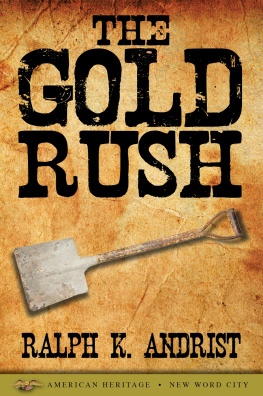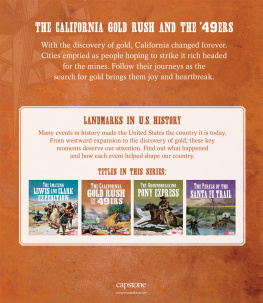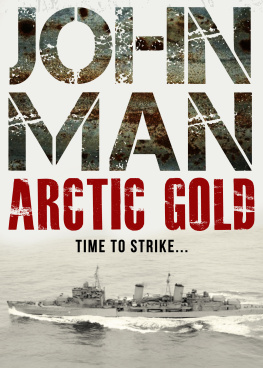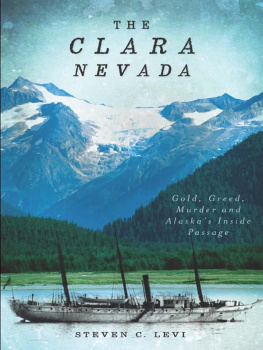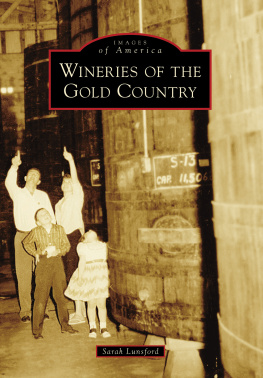SHIP OF GOLD
IN THE DEEP BLUE SEA
ALSO BY GARY KINDER:
Victim:
The Other Side of Murder
Light Years:
An Investigation into the
Extraterrestrial Experiences
of Eduard Meier
SHIP OF GOLD IN THE DEEP BLUE SEA
GARY KINDER

Copyright 1998 Gary Kinder
All rights reserved. No part of this book may be reproduced in any form or by any electronic or mechanical means, including information storage and retrieval systems, without permission in writing from the publisher, except by a reviewer, who may quote brief passages in a review.
Grateful acknowledgment is made to the Robert Manlove family for permission to quote from the journals of Oliver Perry Manlove.
Published simultaneously in Canada
Printed in the United States of America
Library of Congress Cataloging-in-Publication Data
Kinder, Gary.
Ship of Gold in the deep blue sea / Gary Kinder.
p. cm.
eBook ISBN-13: 978-1-5558-4796-8
1. Central America (Ship) 2. ShipwrecksNorth Atlantic Ocean. 3. Survival after airplane accidents, shipwrecks, etc. I. Title.
G530.C4K55 1998
910.91631dc21 97-49812
Design by Laura Hammond Hough and Julie Duquet
Grove Press
841 Broadway
New York, NY 10003
For
Kristin and Lindsay
from whom but a smile is worth more to me
than all of the gold on the Central America
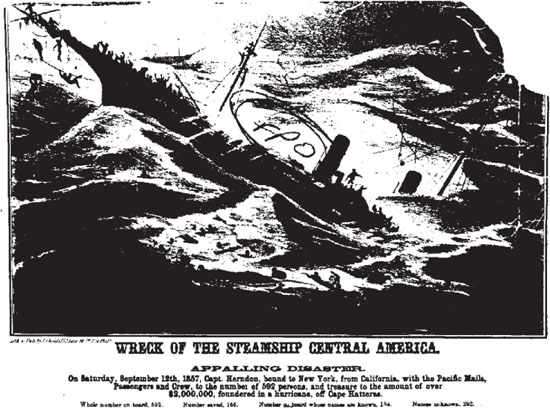
Wreck of the Steamship Central America: J. Childs, Philadelphia, circa 1857. Reproduced by permission of the Peabody Essex Museum, Salem, Massachusetts. Photograph by Mark Sexton.

Rigging, hull, and deck plans of the SS Central America: Cedric Ridgely-Nevitt, 1944. Reproduced by permission of the Peabody Essex Museum/The American Neptune.
CONTENTS
ACKNOWLEDGMENTS
IN THE TEN years since I began researching this book, many things have happened. My father used to say he was going to die before I finished. When he said this, my brother, Randy, and I would laugh, certain he would outlive us all. As I worked to complete what I thought were the final rewrites, my father did die, in January 1995. Three months later, my mother suffered a series of strokes and was committed to a nursing home. Two years later, as I was finally bringing the project to a close, Randy died suddenly, all teachings of the bitter lesson that while we are tending relentlessly to one part of our lives, the other parts do not stand still. So much remained unsaid and undone. For their sakes, and for the sake of others close to me, I wish I could have comprehended quicker and written faster, but I couldnt. During this difficult time of my life, friends filled the void, and I am indebted to them. Three deserve a special thanks for always being there and always caring: Scott Easter, Gary Williams, and my cousin Steve Chamberlain. Thanks, too, to others like Mike and J. J., who came through.
Morgan Entrekin is my editor and publisher and friend. Weve been together almost twenty years. Hes brilliant on the page, honest, and he cares about the people who write for him. Long before Tommy Thompson found the gold, Morgan encouraged me to stay with the story. Then over the next several years, he spent countless hours in Seattle hotel rooms, helping me to see and shape it. Its a trite thing to say, but nevertheless true: Without his commitment to the project and his belief in me, I would never have completed Ship of Gold in the Deep Blue Sea.
At Columbus-America, certain people were especially helpful: Bob Evans and Barry Schatz, Rick Robol and Bill Kelly, Judy Conrad, Paula Steele, Don Hackman, and the rest of the tech crew, who are the characters inhabiting the story but who deserve to be thanked publicly anyway: Alan Scott, John Moore, Ted Brockett, John Doering, Milt Butterworth, Tod Steele, Bryan Anderson, Don Craft, Mike Milosh, and Bill Burlingham.
I want to thank Tommy Thompson for enduring the discomfort he must have felt to have a writer shadowing the project he wanted so carefully guarded. He allowed me to speak with anyone inside the organization and made available to me the groups historical files and letters to the partnership. He allowed me on the ship at sea to observe. He asked for one thing: Because of the sensitive and highly proprietary nature of the information surrounding the discovery of the Central America, and given the highly competitive field of underwater recovery, he wanted to review the manuscript for anything proprietary that might reveal too much of his unique technology. I did not want to do this; I also did not want to be responsible for unwittingly revealing anything that could diminish what he and his group had worked so hard to accomplish. The changes he requested often amounted to substituting a single word to give him the protection he needed. Sometimes he offered suggestions for improving the manuscript by revealing more of his technology. In explaining why certain seemingly minor procedures could not appear in the book, he also helped me to understand the enormous complexity and difficulty of working in the deep ocean. I have come as close as possible to portraying his unusual techniques and procedures without providing a manual for others to duplicate what he has done.
Though it was years ago, I have not forgotten the many hundreds of hours Helene Canavan spent transcribing tapes of my interviews. For the last four years, my assistant, Laura Duncan, has put up with my frequent disappearances, physically and mentally, and managed to keep the office running. Thank you, Laura, and congratulations on the baby. Thanks, too, to my other assistant, Deron Lord, who came in two years ago to take more of the load off, while I traveled to teach my writing seminar to lawyers and finished the manuscript.
Ten years is a long time to expect others to wait and understand. My daughters have hardly known me when I was not working on the book. My greatest joy in having finished is that now even more of my hours will be filled with hearing their thoughts and ideas, their passions and dreams, watching them grow. Alison was there the whole time, waiting with dreams of her own. She deserves to have them fulfilled. Shes the one I want most of all to understand. In both senses. I hope she now does; I think Im now beginning to.
AUTHORS NOTE
ALL OF THE characters in this story are real. I have changed no names, created no scenes from imagination, made up no dialogue. To protect proprietary information, I have minimally altered some material concerning technology and procedures.
I gleaned the historical narrative from diaries of passengers aboard the Central America and hundreds of contemporary articles and interviews with the survivors of the sinking in 1857. I read several books on the California Gold Rush; particularly helpful were The Forty-Niners by William Johnson from Time-Life Books and a doctoral thesis by John Kemble titled The Panama Route. I also read Richard Henry Danas classic, Two Years before the Mast. I referred to drawings of the Central America, a painting of the ship, and woodcuts from scenes along the Panama Route and at the wharves in San Francisco and Aspinwall. For nautical references, I used
Next page

